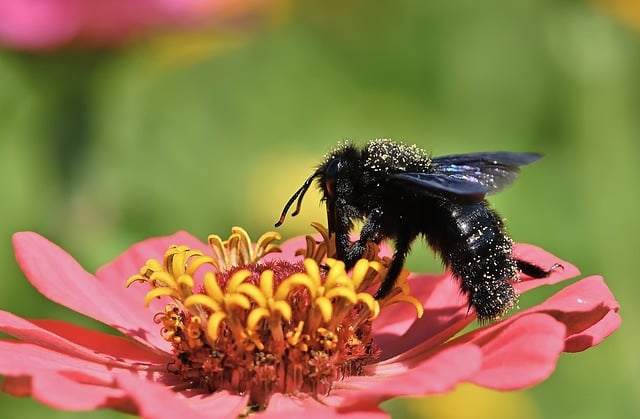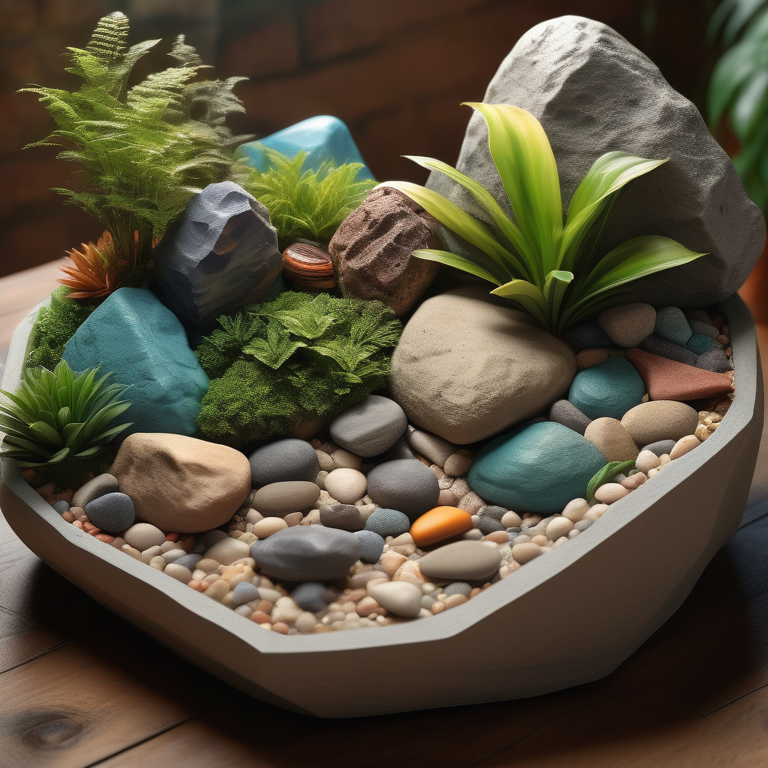Natural Ways to Trap Carpenter Bees Without Harmful Chemicals
Carpenter bees, known for their distinctive appearance and habit of burrowing into wood, can pose a nuisance to homeowners and gardeners alike. In this article, we explore natural and eco-friendly ways to trap carpenter bees without resorting to harmful chemicals. Understanding the behavior of these bees is essential in effectively managing infestations, and by implementing homemade traps, natural repellents, and maintaining a bee-friendly garden, you can deter carpenter bees while promoting a healthy environment for all. Let’s delve into the world of carpenter bees and discover safe and humane methods for managing them.

Introduction to Carpenter Bees
Ah, the industrious carpenter bee – nature’s tiny carpenters or, as I like to call them, the DIY enthusiasts of the insect world. These little buzzers may seem harmless at first, but the damage they can do to your wooden structures is no joke. Let’s dive into how to deal with them without resorting to harmful chemicals.
Overview of Carpenter Bees
Carpenter bees are known for their habit of drilling into wood to build their nests. They may look like your average bumblebee, but don’t be fooled – these guys mean business when it comes to making their homes in your precious wooden belongings.
Signs of Carpenter Bee Infestations
Wondering if you have some unwanted carpenter bee roomies? Look for perfectly round 1/2 inch holes in wooden surfaces, sawdust piles beneath these holes (their version of a “welcome” mat), and maybe even some buzzing around the area. It’s time to take action.
Understanding the Behavior of Carpenter Bees
Let’s get into the minds of these carpenter bees – well, as much as we can without actually being able to talk to them. Understanding their life cycle and what makes them tick can help us come up with effective trapping strategies.
Life Cycle of Carpenter Bees
From eggs to larvae to pupae to full-fledged grown-ups, carpenter bees go through quite the journey in their lifespan. Knowing where they’re at in this cycle can help us intercept their plans of making swiss cheese out of our wooden structures.
Reasons for Carpenter Bee Activity
Why are they so keen on drilling holes into wood, you ask? Well, it’s all about making cozy nests for their young ones and protecting their territory. But hey, we can respect their hustle while also protecting our property, right?
Eco-Friendly Methods for Trapping Carpenter Bees
Let’s keep it green and clean, folks. There are natural ways to trap these carpenter bees that don’t involve harmful chemicals. After all, we want to peacefully coexist with nature, just not in our wooden beams.
Benefits of Natural Trapping Techniques
By opting for eco-friendly trapping methods, we’re not just protecting the environment but also keeping our living spaces safe from unnecessary toxins. It’s a win-win situation for everyone involved – except maybe the carpenter bees.
Importance of Avoiding Harmful Chemicals
We all know that chemicals can be effective in dealing with pests, but they can also have unintended consequences for the ecosystem and our health. So, let’s explore gentler ways to deal with these buzzing visitors.
Creating Homemade Traps for Carpenter Bees
Time to get crafty and outsmart those carpenter bees at their own game. With some DIY traps and a sprinkle of creativity, we can lure them away from our wooden treasures and into a trap they won’t be buzzing out of anytime soon.
DIY Trap Designs for Carpenter bees
From simple bottle traps to more elaborate contraptions, there are plenty of creative ways to catch these critters without breaking a sweat. Who knew pest control could be such a fun DIY project?
Materials Needed for Homemade Traps
Gather your tools – or rather, your household items – because we’re going to need some basic supplies to set up our carpenter bee traps. It’s time to turn those everyday objects into ingenious tools for pest management.# Natural Repellents to Deter Carpenter Bees
Plant-Based Deterrents
When it comes to keeping carpenter bees at bay, some plants are your new best friends. Bee-loved blooms like mint, basil, or eucalyptus can send these buzzing builders searching for a new hangout.
Essential Oils for Repelling Carpenter Bees
Carpenter bees might have a keen sense of smell, but they won’t stick around for the aromatic assault of essential oils like citronella, tea tree, or peppermint. Create your own DIY bee-be-gone spray to spritz away these unwanted guests.
Maintaining a Bee-Friendly Garden to Prevent Infestations
Attracting Beneficial Insects and Birds
Want to be the garden hero? Invite ladybugs, lacewings, or even some feathered friends like swallows to the yard. These natural pest controllers don’t take kindly to carpenter bee antics.
Plant Choices to Discourage Carpenter Bee Nesting
Give carpenter bees a real estate reality check with plants like lavender, rosemary, or marigolds. These aromatic deterrents will have those bees buzzing off in search of friendlier foliage.
Ensuring Safe and Humane Removal of Carpenter Bees
Guidelines for Removing Carpenter Bees Safely
When it’s time for these DIY enthusiasts to skedaddle, opt for gentle methods like using bee vacuums or trap boxes. Remember, carpenter bees may be uninvited guests, but we can show them the exit with kindness.
Responsible Practices for Relocating Carpenter Bees
For those eco-conscious souls, consider relocating carpenter bees to a more bee-friendly location. A little bee diplomacy goes a long way in ensuring a happy ending for both parties involved.By adopting these natural and sustainable methods for trapping carpenter bees, you can effectively manage infestations without harming the environment or beneficial pollinators. Remember to stay vigilant, utilize eco-friendly techniques, and maintain a bee-friendly garden to prevent future infestations. With a little effort and understanding, you can coexist harmoniously with carpenter bees while protecting your property and the ecosystem. Embrace these natural solutions and enjoy a bee-friendly environment free of harmful chemicals.
FAQs
1. Are carpenter bees harmful to humans?
2. Can I trap carpenter bees without using chemicals?
3. How can I prevent carpenter bees from returning to my property?
Must Read : How to Build Your Own Carpenter Bee Trap in 5 Easy Steps






One Comment